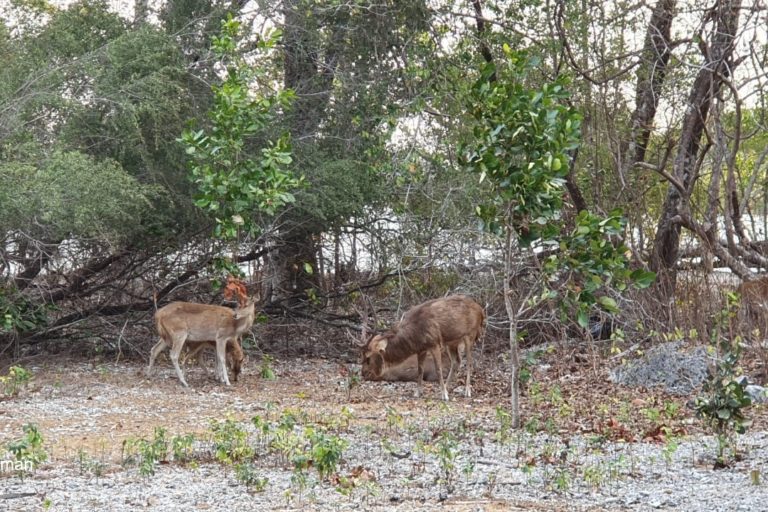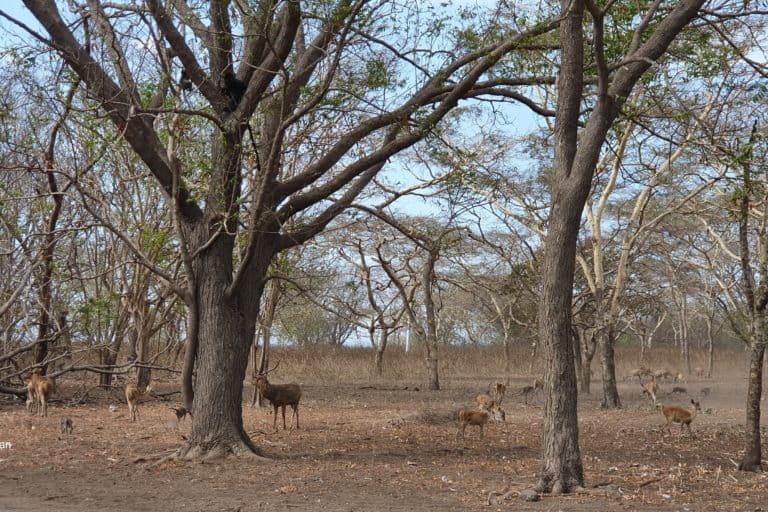- Nearly a quarter of the native population of Javan deer, and two-fifths of introduced populations, occur outside protected areas in Indonesia, according to a recent study.
- These non-protected areas include pulpwood and oil palm plantations and logging concessions, and are therefore at much higher risk of being deforested than protected zones.
- The study’s authors have called for have called for those non-protected areas to be be considered in conservation policymaking for the Javan deer.
JAKARTA — A significant portion of the total population of Indonesia’s Javan deer occurs outside protected areas, highlighting the role of such zones as wildlife refuges, according to new research.
The study, published Jan. 25 in the Journal for Nature Conservation, reported records of the Javan deer (Rusa timorensis) in its native range on the islands of Java and Bali, as well as further east from West Nusa Tenggara to Papua. The study said more than half of the native (77%) and introduced (59%) populations occurred inside protected areas such as national parks, reserves, and wildlife sanctuaries. The rest were found in production forests, pulpwood plantations, oil palm concessions, and logging areas.

The researchers reviewed all Javan deer records in Indonesia between 1894 and June 2019; evaluated the effects of habitat loss due to current land use, ecosystem availability; and accounted for the importance of protected areas in their models.
“This study confirmed the resilience of Javan deer outside primary forests with nearly half of the introduced Javan deer locations were reported outside both protected areas and unmanaged forests,” writes lead author Dede Aulia Rahman, a conservation scientist at the Bogor Institute of Agriculture (IPB).
Those non-protected areas, which include land earmarked for plantations, need to be considered in conservation policymaking for the Javan deer, the researchers write.
“Our study provides reliable information on places where conservation efforts must be prioritized, both inside and outside the protected area network, to safeguard one of the remaining Indonesian large deer,” the authors write.
The Javan deer is a highly flexible tropical grassland species. It inhabits areas ranging from marshes at sea levels to elevations up to 900 meters (3,000 feet). They are more likely to occur in landscapes with lower rainfall.
The deer is a protected species under Indonesian law, and plays a major role in nature as a seed disperser. But poaching, habitat degradation and the spread of invasive plant species have combined to slash the native populations in Java and Bali over the past few decades.
Indonesia has seen a dramatic decline of its natural forests since the end of the 18th century. The rate of deforestation has surged since the middle of the 20th century, with deer habitat among the massive swaths of forest parceled out for oil palm and pulpwood concessions. Those land-use changes, from 1965 on, underpinned the country’s economic model of growth based on agriculture, livestock breeding, forestry, and large-scale human resettlement, particularly on the island of Java.

The new study calls for research to compare the survival prospects of Javan deer populations in protected areas versus other areas. Such a study, they say, is important to determining the essential roles of production and secondary forests in serving as refuges for Javan deer populations outside protected areas.
“Identifying suitable landscapes next to protected areas needs to be complemented by the involvement of key stakeholders advised by conservation managers,” Dede writes.
Forest concessions and non-protected areas are more vulnerable to changes in land use, including deforestation, the study says.
“Concessions should engage proper management for Javan deer conservation,” Dede writes.

Citation:
Rahman, D. A., Condro, A. A., Rianti, P., Masy’ud, B., Aulagnier, S., & Semiadi, G. (2020). Geographical analysis of the Javan deer distribution in Indonesia and priorities for landscape conservation. Journal for Nature Conservation, 54, 125795. doi:10.1016/j.jnc.2020.125795
FEEDBACK: Use this form to send a message to the author of this post. If you want to post a public comment, you can do that at the bottom of the page.